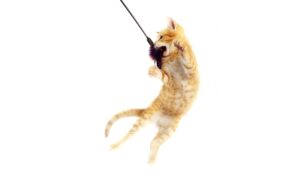The Crystal Ball Says Another Stellar Year
Chris Junior //January 8, 2020//
The U.S. pet industry saw pet spending at $72.56 billion in 2018, according to the American Pet Products Association (APPA), with this number being an increase of 4.4 percent over 2017’s $69.51 billion. And APPA estimates pet spending will reach $75.38 billion in 2019, a growth of another 3.9 percent. Can the industry expect another 4 percent increase for 2020, which would mean consumer pet spending would hit $78.4 billion? It’s possible, but it’s not going to be without its challenges.
For Dogs and Cats
These are turbulent times, with the most impactful obstacle being consumer fallout from multiple reports by the U.S. Food & Drug Administration (FDA) regarding possible diet-associated dilated cardiomyopathy (DCM). From January 2014 to April 2019, the FDA received 524 reports of DCM, with 515 in dogs and nine in cats. Although the FDA has reported in the past that an average of 10 to 15 percent of dogs and cats in the United States will be diagnosed with some form of heart condition yearly, it has yet to find a causative scientific link between ingredients or a dietary link to the development of DCM.
This year will see independent retailers continuing to take a hit in pet food sales, and the 16 brands topping the list of the FDA’s DCM reports will be attempting to improve their damaged reputation in the public eye. Also impacted by the FDA investigation are other grain-free pet food manufacturers, wholesale distributors and even farmers of pulses, such as peas and lentils. In fact, American Pet Nutrition decided to stop manufacturing its grain-free pet food brands, Elevate and My Little Wolf/Lion, in October. And since last June, many independent pet outlets have reported losing a sizeable percentage of customers who have stopped visiting their store as a result of the third FDA status report.
Some manufacturers are focusing on grain-inclusive pet food in an attempt to appeal to consumers who are staying away from grain-free offerings. That should have a positive impact, but these manufacturers are going to have a slow, uphill climb before they can regain consumer trust. In the meantime, retailers are scrambling to find a way to appease customers who had been previously feeding their dogs a grain-free diet. A possible outcome in 2020 from the grain-free debate might be the trend of pet parents feeding a variety of foods, rotating among and between several manufacturers and food varieties. The goal would be to create a nutritional balance and to avoid problems caused by long-term exposure to a specific protein source, which some people believe might lead to the development of food allergies or intolerances.
In the treats sector, the FDA once again caused a stir in 2019 when it released a warning for consumers to avoid buying or feeding pig ear treats to dogs as it coordinated with the U.S. Centers for Disease Control and Prevention (CDC) to investigate 154 human cases of salmonella. During the multistate investigation, testing conducted by the Michigan Department of Agriculture and Rural Development (MDARD) revealed that samples of pig ear pet treats collected from Pet Supplies Plus tested positive for several strains of salmonella from several vendors, including Lennox Intl Inc. In addition, BJ’s Wholesale Club stores were found to be selling pig ears that also tested positive for salmonella.
 Unfortunately, there’s always going to be a risk associated with raw food and body-part treats, especially with the pet industry having no control over how consumers handle these products once they leave the pet store. Raw food is going to remain as popular as ever in 2020, along with raw-coated kibble and freeze-dried food. The key to these categories succeeding lies in manufacturers being committed to quality and safety. With food and treats, consumers are gravitating toward products with human-grade, non-GMO ingredients that are free of chemicals and preservatives.
Unfortunately, there’s always going to be a risk associated with raw food and body-part treats, especially with the pet industry having no control over how consumers handle these products once they leave the pet store. Raw food is going to remain as popular as ever in 2020, along with raw-coated kibble and freeze-dried food. The key to these categories succeeding lies in manufacturers being committed to quality and safety. With food and treats, consumers are gravitating toward products with human-grade, non-GMO ingredients that are free of chemicals and preservatives.
When it comes to product innovations, one sector that we can expect to see changing in 2020 is cat litter, thanks in part to consumers demanding more sustainable alternatives. Multicat, lightweight and health-monitoring litter should remain solid categories among cat owners, as they fill those consumer needs. And while wood, paper and corn will remain popular sustainable sources, cat litter made of tofu is an innovation that has been booming in Asia and some parts of Europe.
Other innovative products, especially those involving smart technology, are transforming pet care in new and exciting ways. GPS/health collars and micro-chipped controlled feeders are going to become more commonplace as pet owners search for products that add safety, convenience and peace of mind. Pet owners have been using smart devices for themselves, so it’s only been a matter of time before they incorporate pet tech into their home. After all, pets being part of the family is no longer a trend but the norm.
While high-tech has been a buzzword for much of this century, the industry should see the fastest growth in these smart products this year as pet parents discover how pet tech strengthens their bond with their fur babies. The biggest push might be how consumers learn how many of these products enable them to monitor the health and well-being of their pets via data recorded on digital monitoring devices that can be synched to the pet parent’s smartphone app.
Arguably the most popular trend in 2019, and a category that even the most pessimistic analyst couldn’t help but notice, cannabidiol (CBD) products will likely continue to garner immense attention in 2020. Having already expanded beyond dogs to now include cats and even horses, CBD-based products come in many forms and can be found in both health and treats aisles in retail outlets across the country.
Although the category has been called “The Wild West of the pet industry,” CBD pet products are not disappearing any time soon, and many retailers are gravitating toward brands that offer both human and pet lines to coincide with the previously mentioned trend of consumers wanting their pet’s lifestyle to match their own. Thus, as CBD becomes more prevalent with people, it will surely do so on the pet market as well.
Transparency and third-party testing are two major factors in distributors, retailers and consumers determining what CBD brands and products to trust in, especially due to the importance of these products containing little-to-no tetrahydrocannabinol (THC), which is the main psychoactive compound in marijuana that’s responsible for its psychological “high” effects. Already under scrutiny from the FDA, which last month issued warning letters to 15 companies for illegally selling products containing CBD in ways that violate the Federal Food, Drug and Cosmetic (FD&C) Act, it’s only a matter of time before the pet CBD market faces strict regulations. Until then, it’s unlikely that this warning will reduce consumer demand for pet CBD products.
Spotlighting Other Sectors
Bearded dragons remain at the top spot among reptile enthusiasts, and this species should hold that title for much, if not all, of 2020. Yet the motto of “bigger is better” is no longer applying to reptile hobbyists. Be it space limitations or the cost to keep these exotic pets, consumers appear to be enthusiastic about pint-sized herps like geckos, chameleons and smaller species of turtles and tortoises.
A surprising trend that might continue to grow is consumer interest in insects as pets. Insects, spiders and other invertebrates are finding immense popularity at consumer reptile shows, and manufacturers such as ZooMed have taken advantage by producing pet insect products. The company has a Creatures lineup, which even offers a Creature Habitat Kit, a starter kit that includes substrate, décor and an insect guide to help new bug keepers understand what it takes for their pet invert to flourish.
Tarantulas and scorpions are always in the spotlight, but isopods (an order of crustaceans that contains more than 10,000 different species) are climbing the popularity ladder. Jeannie Younger, founder of Creative Ectothermic Solutions, is one of several members of the pet community who have noticed the increased demand among hobbyists.
According to Younger, isopods are detritivores, which means they consume dead organic material. In the wild, they can typically be found in leaf litter, under wood and rocks, and generally in moist areas. Once only viewed as feeder bugs, isopods are being valued as detritivores in a home terrarium that is designed for another species of animal like a reptile, spider or amphibian, where they are a secondary inhabitant acting as a bioactive terrarium cleanup crew. However, these tiny critters are fast becoming stars on their own, as they’re extremely low maintenance and easy on the wallet compared to other herps and invertebrates. Due to their attractive shell colorations, and based on their rarity, species such as Montenegro, Black Evil and Blonde Ducky are in high demand.
In the aquatic sector of the industry, the excitement stems from GloFish, which is launching its betta after more than a decade of the company offering its unique forms of fish on the market. Since 2003, when the company’s fluorescent zebrafish was approved by the FDA, it has been extremely popular with children, making it a way to introduce them to the aquarist hobby, as well as with aquarium owners who are looking to jazz up their established aquariums with a colorful species.
Entering 2020 with more than 20 different lines—between species and color combinations—GloFish has made a splash with each new form. The tetras, barbs and even sharks appear bright under normal white light and then fluoresce brilliantly under a blue light. But when the tropical fish are exposed to black light in a completely dark room, their colors pop in a stunning beautiful fashion.
As with any kind of pet, no matter the species of animal, education is of extreme importance. In addition to teaching the public that GloFish are genetically modified livestock—not dyed—and that worked with the USDA and the U.S. Fish and Wildlife Service, it’s the industry’s responsibility to be sure consumers know that these fish have the same specific tank requirements and list of compatible tankmates as their ordinary brethren of the same species.
And, according to the crystal ball, education is key regarding all areas of the pet industry, be it pet foods, treats or accessories. The more knowledge we have, the better we can match the most appropriate product for consumers who want the best for their pet.



















